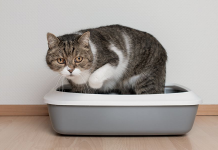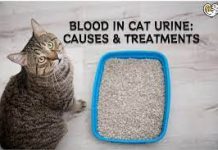Cat Acne: Causes, Symptoms, Treatment, and Prevention
Cat owners often overlook the fact that felines can also experience skin issues, including acne. In this comprehensive guide, we’ll explore the causes, symptoms, available treatments, and preventive measures for cat acne, ensuring your furry companion’s skin stays healthy and blemish-free.

Unveiling Cat Acne
Keywords:
Cat acne introduction, Feline skin condition, Understanding cat acne
Cat acne, a relatively common dermatological condition in cats, manifests as small, raised blackheads or whiteheads on the chin and lip areas. While it might not be as complex as human acne, understanding its causes and addressing its symptoms is crucial to maintain your cat’s skin health.
Cat acne is often overlooked or mistaken for dirt, making it essential for cat owners to recognize its signs and take appropriate action.
Recognizing Symptoms of Cat Acne
Keywords:
Cat acne symptoms, Feline chin acne, Identifying cat skin issues
Identifying cat acne involves noticing key symptoms:
Small Bumps:
The appearance of blackheads or whiteheads, often concentrated around the chin and lip regions.
Mild Inflammation:
Affected areas might show mild redness or inflammation.
Behavioral Changes:
Cats with acne might scratch or rub their chin against objects more frequently.
Observing these signs early helps ensure timely intervention and prevents potential complications.
Causes and Triggers of Cat Acne
Keywords:
Cat acne causes, Feline skin condition triggers, Chin acne factors
Several factors contribute to cat acne development:
Overactive Sebaceous Glands:
Overproduction of sebum (skin oil) can clog hair follicles and lead to acne.
Poor Grooming Habits:
Cats with inadequate grooming might experience dirt buildup that exacerbates acne.
Plastic and Dirty Bowls:
Using plastic food and water bowls can harbor bacteria and worsen chin acne.
Diagnosing Cat Acne
Keywords:
Diagnosing feline acne, Veterinarian examination, Cat skin condition assessment
Diagnosing cat acne involves a veterinarian’s expertise:
Physical Examination:
A vet examines the affected area, looking for characteristic bumps, redness, or inflammation.
Rule Out Infections:
The vet may perform tests to rule out bacterial or fungal infections that mimic acne.
Professional diagnosis ensures accurate identification and appropriate treatment recommendations.
Treating Cat Acne
Keywords:
Treating feline acne, Cat acne remedies, Chin acne treatment
Effective treatment options include:
Topical Antiseptics:
Applying antiseptic solutions to the affected area helps cleanse and prevent infection.
Benzoyl Peroxide Products:
These products help unclog pores and reduce inflammation.
Gentle Cleaning:
Regularly cleaning the chin area with a mild cleanser can prevent buildup.
A veterinarian’s guidance is crucial to determine the most suitable treatment plan.
Prevention and Care
Keywords:
Preventing cat acne, Chin acne prevention, Feline skin health
Taking preventive measures can minimize the risk of cat acne:
Hygiene and Grooming:
Maintain proper grooming practices to prevent dirt buildup.
Non-Plastic Bowls:
Opt for stainless steel or ceramic bowls to reduce bacteria growth.
Regular Checkups:
Regular veterinary visits ensure early detection and prompt treatment if needed.
By adopting preventive strategies, you can help your cat enjoy healthy and clear skin.
Frequently Asked Questions (FAQs)
1. What is cat acne, and what does it look like?
Answer: Cat acne is a skin condition characterized by small blackheads or whiteheads on the chin and lip areas of cats. These bumps can resemble human acne but are typically less severe.
2. Is cat acne painful for my pet?
Answer: Cat acne is usually not painful, but in some cases, mild discomfort or itching might occur. Monitoring your cat’s behavior and addressing any signs of discomfort is important.
3. Can cat acne be mistaken for other skin issues?
Answer: Yes, cat acne can be mistaken for other conditions like fungal infections. Consulting a veterinarian for accurate diagnosis is crucial to rule out other potential issues.
4. How is cat acne different from human acne?
Answer: While both conditions involve clogged hair follicles, cat acne is less severe and rarely leads to pus-filled lesions. Human acne is more complex and can result in larger, inflamed pimples.
5. Are certain cat breeds more prone to acne?
Answer: Cat acne can affect any breed, but it’s more common in cats with folded skin or shorter fur, which might increase the likelihood of dirt and oil buildup.
6. Can I treat cat acne at home, or should I consult a vet?
Answer: Mild cases of cat acne might improve with gentle cleaning and hygiene practices. However, it’s advisable to consult a veterinarian for proper diagnosis and treatment, especially if the condition persists.
7. Can stress contribute to cat acne?
Answer: Stress can exacerbate existing skin issues, including cat acne. Maintaining a stress-free environment and addressing any potential stressors can help prevent flare-ups.
8. Are there natural remedies for cat acne?
Answer: While there are various home remedies suggested, it’s best to consult a veterinarian before using any natural treatments. Professional guidance ensures your cat’s safety and well-being.
9. Can cat acne recur after treatment?
Answer: Yes, cat acne can recur, especially if preventive measures aren’t taken. Regular cleaning and adopting preventive strategies can reduce the risk of recurrence.
10. Is cat acne a sign of poor hygiene?
Answer: Cat acne can occur even in well-groomed cats. Factors like genetics, skin type, and environment play a role. Proper hygiene practices, however, can help manage and prevent outbreaks.
Conclusion
Cat acne might be a common skin issue, but its impact on your feline friend’s well-being can be minimized through awareness, prompt treatment, and preventive actions. By recognizing symptoms, addressing causes, and seeking professional advice, you can ensure your cat’s comfort and confidence with blemish-free skin.




